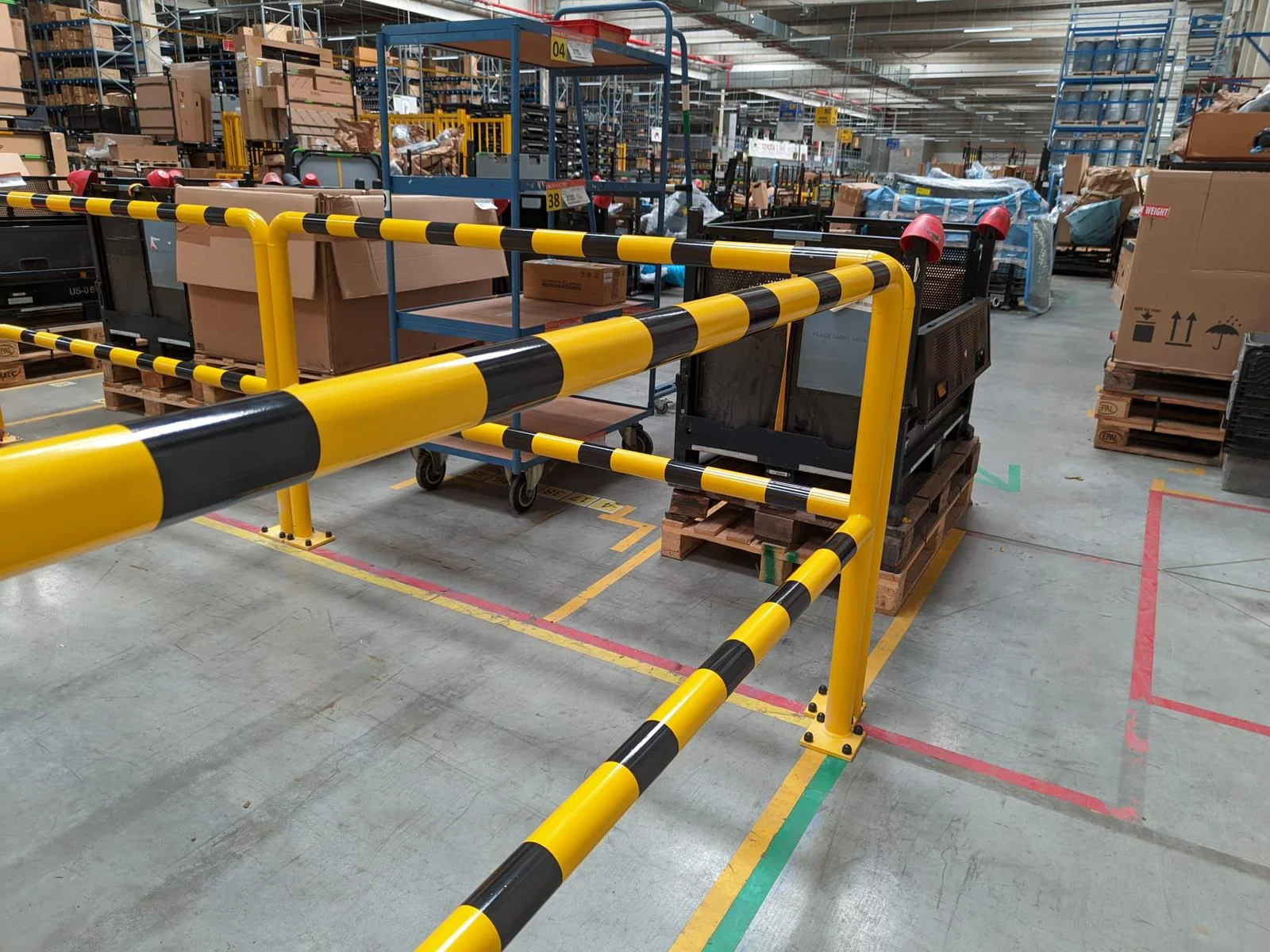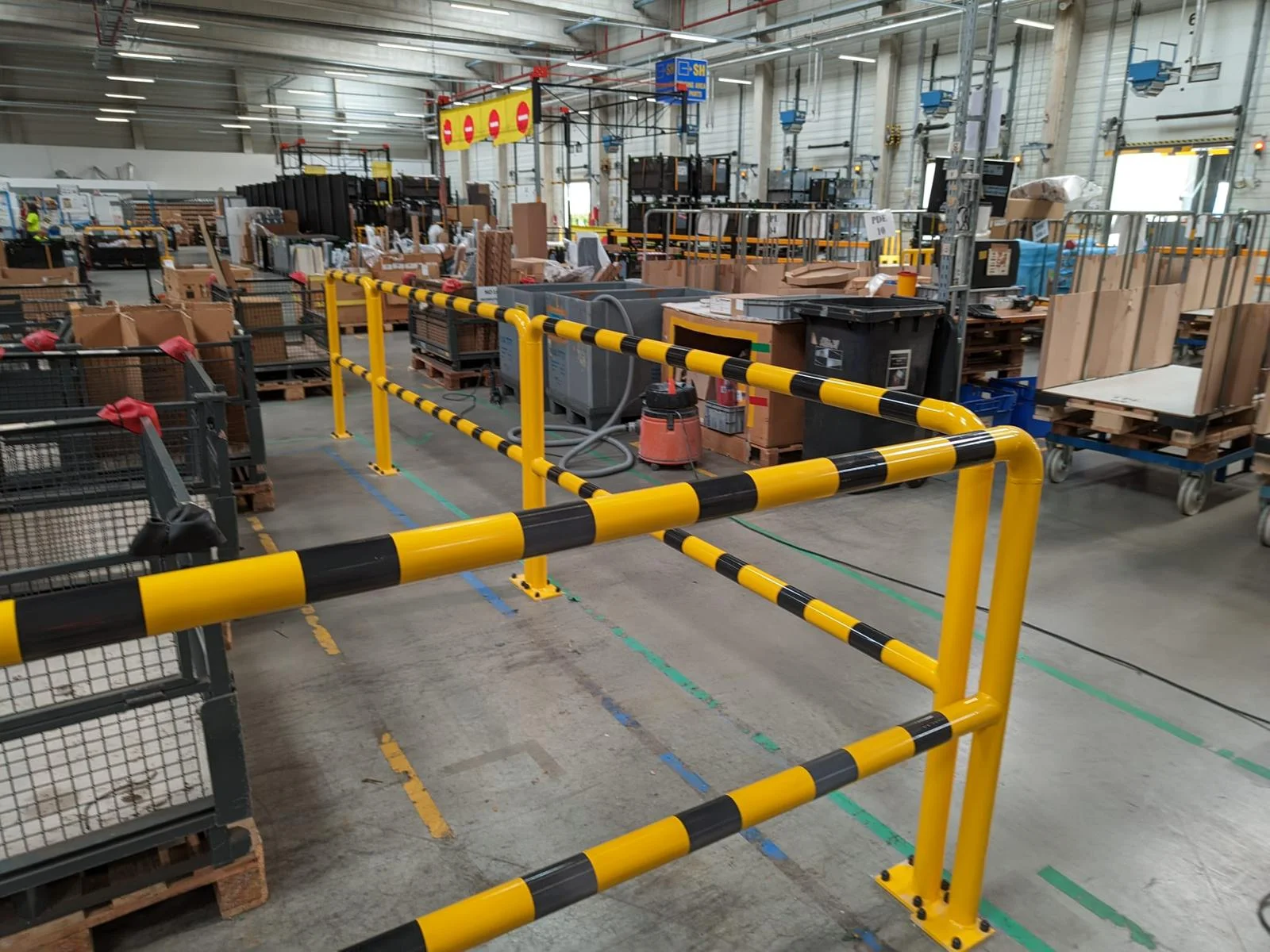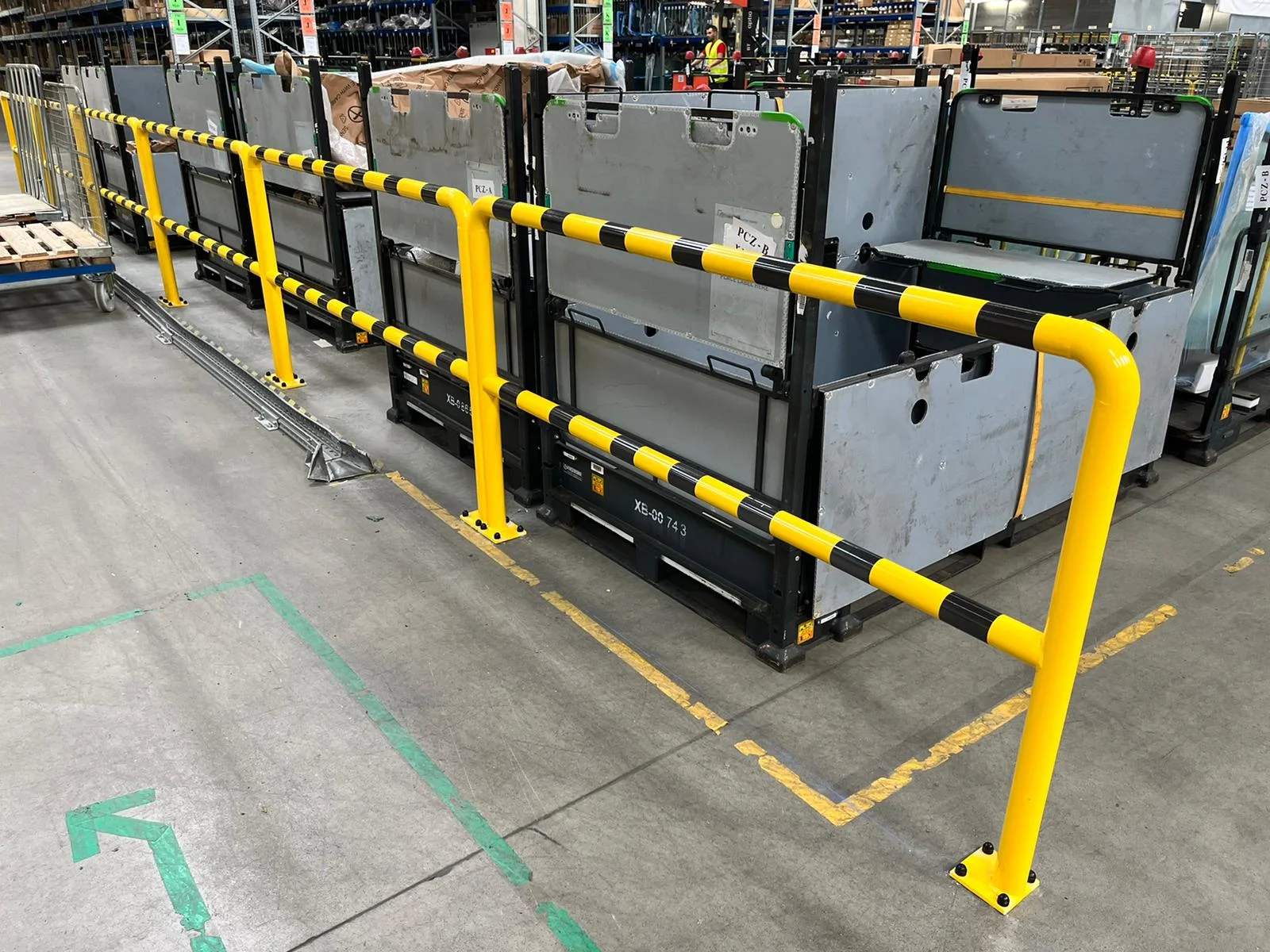What are safety barriers for warehouses and production plants?
What are the types of barriers (posts, balusters) and how to use them?
Safety barriers, also known as crash barriers or protective barriers, are safety features in warehouses and manufacturing plants that are used to protect equipment, installations, racks or appliances from damage resulting from Accidental Impacts by forklifts, transport vehicles or other equipment used within a facility.
Industrial barriers can be made of a variety of materials, including steel, aluminum, as well as plastic, and can take a variety of forms, depending on the needs and specifications of the site.
Protective posts: Placed at strategic points, such as entrances, corners of buildings, or along walls, to protect these areas from impacts. These are usually steel or cast iron elements that can be anchored in industrial floors for extra strength.
Balustrades and barriers: Consist of horizontal or vertical bars that form longer protective sections. They are used to fence off areas particularly vulnerable to collisions or to designate zones for the movement of vehicles and pedestrians in the warehouse.
Safety barriers: High-quality components made of flexible materials or steel that can absorb impact energy and protect both vehicles and infrastructure by minimizing impact force.

Rack protection systems: Specially designed safety barriers to protect the corners of warehouse racks from damage caused by warehouse vehicles.
Protection of channels and pipes: Designed to protect installation elements from impacts, they can take different forms, depending on the need to protect certain sections.
Angles and protective strips: Are used to protect edges and corners, can be made of both metal and flexible or rubber plastics.
The use of safety barriers is a matter of properly designing the workspace and understanding the flows of vehicles and workers within the area. It is important that the barriers are properly positioned and adapted to the level of potential risk, as well as clearly visible, often through the use of warning signs in the form of high-contrast warning strips or safety colors.
Regular checks on the condition of safety barriers and the rapid replacement of damaged components increase their effectiveness and contribute to ensuring a safe working environment.

Can safety barriers (posts, balustrades) for warehouses and production plants protect against any damage?
Safety barriers, such as posts and railings, used in warehouses and manufacturing plants are designed to protect both equipment and workers from various types of damage and accidents.
Equipment protection: Barriers can protect expensive equipment - such as storage racks, production machines, or forklifts - from mechanical damage caused by improper maneuvering, collisions, or Accidental Impacts.
Infrastructure protection: They are used for structural protection of buildings, protecting walls, gates, columns, pipes, cables and other infrastructure elements from damage.
Worker protection: With safety barriers, safe paths can be established for workers, separating vehicle traffic areas from pedestrian areas, which helps prevent accidents.

Protection of goods: In warehouses, safety barriers also protect the stored goods from damage that could occur as a result of, for example: collapse of the rack, impact by a warehouse vehicle, etc.
Vehicle protection: In designated areas, bumpers can protect vehicles from damage, such as when parking.
The types of damage that resistance bars protect against can therefore be very different and depend on the specifics of a given space and the type of work performed in it. They can be installed both on resin floors, and on polished concrete.




